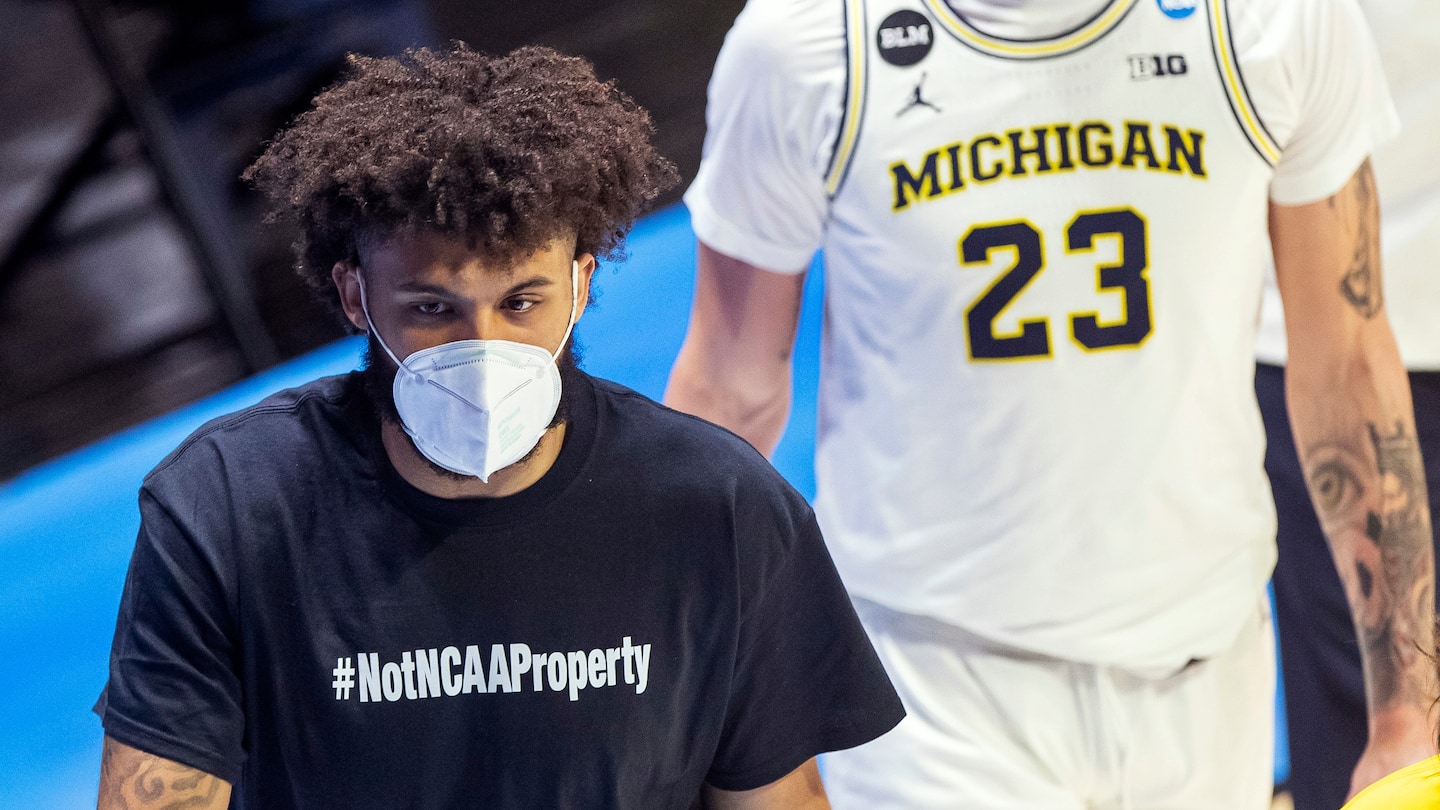March Madness has long been the NCAA’s Magic Eraser. This time it’s a highlighter.

In total, the experience was both what we wanted and what we needed. It was wild. It was sports, life and so many of our problems, all bouncing off each other, creating unmistakable reflections.
As a remorseless curmudgeon who scowls often at the insincerity that keeps tumbling out of sports during the covid-19 pandemic, I didn’t anticipate when this month began that I’d be feeling so good. Or so bad. Or so mad. Or so conflicted.
For the past year, I have been in a strange sports anesthesia. This is the first event that has penetrated the numbness for more than a moment, game or day. The lure of March Madness is always chaos, but this one is especially chaotic, a spectacular mess that cannot be contained. It’s not just that the men’s bracket busted like never before in the first two rounds. Pretense has been shattered, too.
So many sportswriters, myself included, write about the Big Dance as if it is the sport’s Magic Eraser. No matter the issues, it makes everything nice and dreamy again. We pretend that this three-week showcase creates a virtuous model with the power to heal college basketball. But we’re only enabling a fantasy that distorts how the sport should be seen.
We unintentionally play pick-a-side with two story lines that should be left to coexist: 1, The sport fails athletes on many levels, and its structure desperately needs creative, practical reimagination; 2, It hosts the greatest American tournament ever conceived. The grime doesn’t make the event any less exceptional. The March magnificence doesn’t make the other months any less troubling.
That’s the amazing thing about how this March Madness has begun. It’s braided differently. There is no place for the bad to hide, no way for the good to be denied. It’s all entwined, and the varying themes have been complementary rather than in opposition. There’s a beauty to the rawness of it. You’re not being sold stale decency along with the fresh drama. The sport is bare, rotten, rudderless and negligent. Still, the participants deliver joy while filling a leadership void with their willingness to speak truth.
This is the month of Sedona Prince, the Oregon center who posted a video that helped expose the disparity in how the NCAA equipped weight rooms for the men’s and women’s tournaments and sparking a conversation about sexism. And this is also the month of super freshmen Paige Bueckers of Connecticut and Caitlin Clark of Iowa, who will meet in a Sweet 16 matchup that highlights the present and future of women’s college basketball.
This is the month in which you can’t miss injured Michigan guard Isaiah Livers wearing a #NotNCAAProperty T-shirt. And this is the month in which No. 15 seed Oral Roberts advanced to the Sweet 16 and Joe Pleasant, a 59 percent free throw shooter from Abilene Christian, made two from at the foul line to upset Texas.
After the Wildcats of Abilene, Tex., lost to UCLA in the round of 32 on Monday, Coach Joe Golding reflected on his team’s run.
“I think what March Madness is all about is the underdog,” he said. “This is a group that played in an indoor tennis court this year because we’re building a brand-new facility.”
Later, he added: “These kids are not spoiled. It’s a special, special, special group of dudes, man. … Abilene Christian beat the University of Texas 48 hours ago, and that’s an incredible feat, man, by an incredible group of men that will be remembered forever for it.”
On the other hand, there was the Colorado men’s basketball team. The Buffaloes left Indianapolis on Monday knowing they were leaving the NCAA bubble and returning home to tragedy. Tad Boyle spoke of coaching with “an emptiness in my stomach” after learning of the mass shooting that killed 10 people in Boulder, Colo., where the university is located, about an hour before a 71-53 loss to Florida State.
“Another senseless act of violence that we’ve experienced as a country many, many times,” Boyle said. “And so it puts this game in perspective. It certainly puts losing in perspective. But even if we would have won this game and celebrated going to the Sweet 16, it would have put a damper on it.”
The first week of March Madness was not a time to escape. It was a time to feel. And the games intersected with everything you could possibly feel. And some of the issues raised will remain prominent even as the competition approaches its end. With some luck, those issues will stay relevant long after the final buzzer.
But despite the problems, hope pierced through all the entangled emotions. Even in controlled and quiet environments, the tournaments overflow with spirit. Possibility seems so abundant in a women’s field of 64 teams and a men’s tourney of 68. Of course, the sport is not as fair and inconclusive as it looks in its best form, but look at what it could be if it tried harder, thought deeper and prioritized better.
Now, look at those players, athletic as can be, unrelenting in their enthusiasm and belief. Look at how invested they are in playing and living properly. Look at how much they’ve risked and sacrificed to resurrect America’s greatest tournament.
A year ago, when covid-19 struck, this event was the first big thing we lost. Now it’s clear why we missed it so much.






